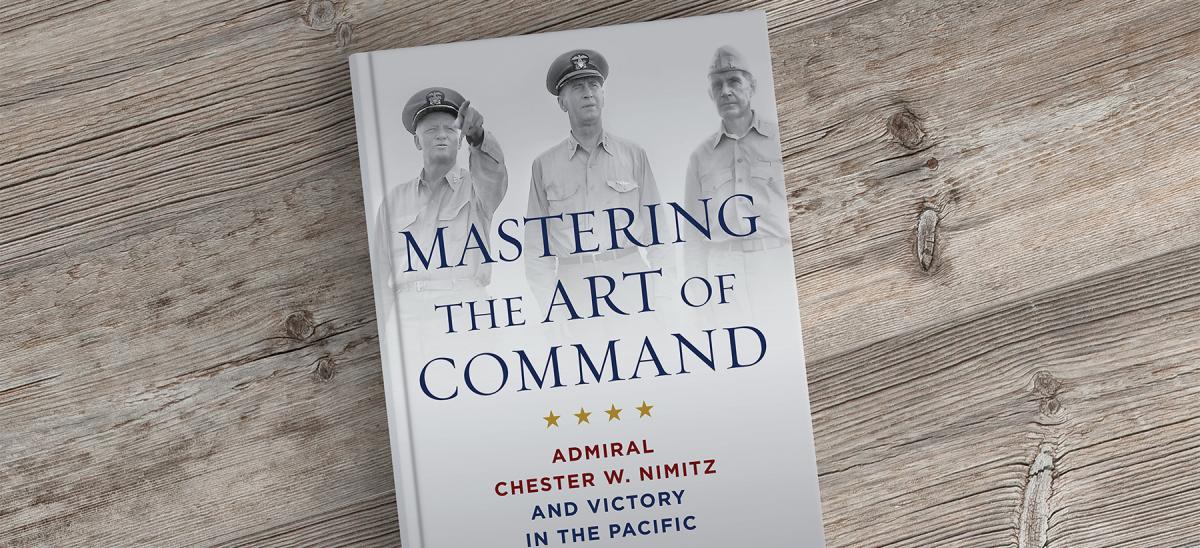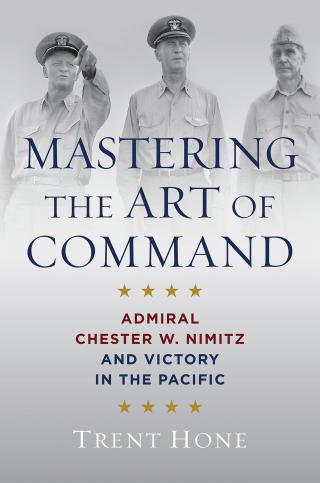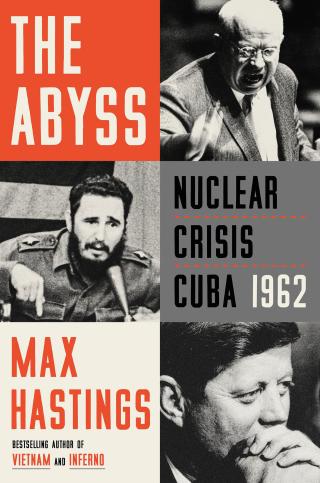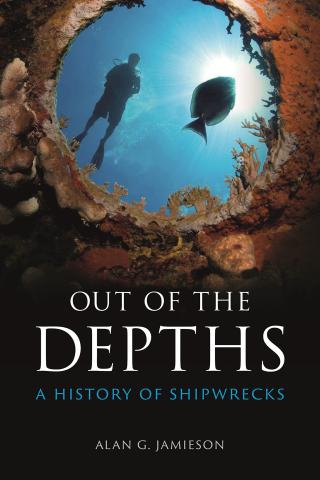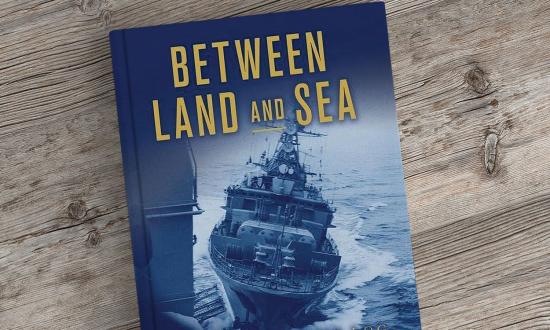Mastering the Art of Command: Admiral Chester W. Nimitz and Victory in the Pacific
Trent Hone. Annapolis, MD: Naval Institute Press, 2022. 448 pp. Illus. Notes. Biblio. Index. $39.95.
Reviewed by Lieutenant Kyle Cregge, U.S. Navy
It is to Trent Hone’s credit that on completing his first naval history book, Learning War: The Evolution of Fighting Doctrine in the U.S. Navy, 1898–1945, my immediate comparison of the book was to Jared Diamond’s 1997 Pulitzer Prize–winning book Guns, Germs, and Steel. While the latter is a history of the world and Hone’s a period examination of a particular U.S. military service, what makes both special is their authors’ commitment to transdisciplinary analysis. Diamond’s work tells a history of the world that has been told before but interlaces key moments with a wealth of data on geography, climate, domesticable animals, and more to reinforce his historical narrative, provide a quantitative basis for analysis, and dispel myths and misperceptions that may bind in policymaking today.
In Learning War, Hone expertly tells a historical narrative of how a post–Spanish-American War U.S. Navy adapted to become the fleet that would help win World War II. Yet, like Diamond, Hone’s central focus on treating the Navy as a “complex adaptive system” and related theories of complexity science, organizational management, and supporting innovation illuminates the history while providing value for Navy leaders willing to consider the fleet of today in the same light as we look to the future.
Why, then, should readers consider Hone’s newest book, Mastering the Art of Command, given the well-trod biographical territory for Nimitz, whether by E. B. Potter in 1976 or Craig Symonds’ Nimitz at War (Oxford University Press), released in 2022 as well? Precisely because Hone succeeds again in weaving complexity science and modern leadership and organizational principles into the historical narrative, to answer not only how and why Nimitz succeeded, but also how any leader at the helm of a complex adaptive system can influence the system and achieve success. Given the tight focus on Nimitz’s time as Commander-in-Chief, Pacific Fleet, and Pacific Ocean Areas during World War II, Hone’s book is less a biography and more an organizational examination of a leader in crisis and a constantly evolving complex scenario; a time when the leader must balance the expectations, trust, and realities on the ground with those of his subordinates and his superiors. To that end, it is eminently readable and applicable for Navy leaders of all ranks today.
Particularly notable areas that Mastering the Art of Command unveils are Nimitz’s flexibility in adapting ship and shore organizations such as the first Joint Intelligence Center, or directing ships to set up a combat information center. Also notable was Nimitz’s risk-taking in not only the Battle of Midway, but also in the Aleutians and even early in the war with Halsey’s raids into the Marshalls-Gilberts islands, and how those tactical actions had strategic impacts on Japanese decision-making. In addition, Hone’s analysis of how Nimitz managed Fleet Admiral Ernest King—both in the Commander-in-Chief and Chief of Naval Operations’ expectations on war planning and in the selection of personnel in command and on staffs—was enlightening. Further, Mastering the Art of Command thoroughly explains the U.S. military reorganization executed in the runup to the canceled mainland Japanese invasion—one that would have ultimately placed the Joint Chiefs in operational command with Nimitz and MacArthur as in-theater service component leaders, rather than choose either man to be solely in charge.
All of these are present-day issues in their own way, notwithstanding the actual historical organizations that exist today precisely because of Nimitz’s flexible leadership. This includes his breaking up tactical and readiness organizations, such as ending Halsey’s concurrent command of Carrier Division 2 while being Commander, Aircraft Battle Force.
Hone’s work is superb in specifying how much of the Pacific campaign was not a linear, step-by-step island-hopping campaign inevitably resulting in Japanese surrender. Nimitz, his staff, his peers, and his bosses all looked for ways to accelerate campaigns and achieve victory. Nimitz was able to be flexible in part because of the system he grew up in, as described in Learning War, but also because he led and organized in his role for success. All leaders seeking similar clarity would be well served by reading this book.
Lieutenant Cregge is a surface warfare officer. He served on a destroyer, cruiser, and aircraft carrier as an air-defense liaison officer. He is a future SWO department head.
The Abyss: Nuclear Crisis Cuba 1962
Max Hastings. New York: Harper, 2022. Illus. Timeline. Notes. Biblio. Index. $35.
Reviewed by Steven Wills
While 60 years have passed since the Cuban Missile Crisis riveted the world for 13 days in October 1962, it is still hard to find a comprehensive account informed by subsequent declassifications and revelations. British journalist and historical writer Sir Max Hastings’ latest book, The Abyss: Nuclear Crisis Cuba 1962, brings together narratives of the key national leaders Fidel Castro, Nikita Khrushchev, and John F. Kennedy, along with that of the United States’ key British ally, to better explain the historical impact of the crisis. These national and personal narratives work well to set the stage for the dramatic nuclear confrontation between the superpowers.
Hastings states that the book is for a general reader, and it is very readable. Its best sections are the chapters that tell the origin stories of the key national protagonists. The story of Fidel Castro’s march to ultimate triumph in Cuba from Mexican exile on a leaking, decrepit former U.S. Navy vessel renamed the Granma, which Hastings relates had a “ridiculously tragic aspect,” is the stuff of high adventure. The book also captures the excitement of the Cuban people in their support, especially in the class of Cuban poor have-nots. Hastings is equally fair in noting the problems of the nascent Castro regime, especially in its failure to address the needs of poor Cubans.
Hastings is also tough on Nikita Khrushchev’s Soviet Union and John F. Kennedy’s United States. The book clearly paints Khrushchev as a bully who knew he was outmatched by the Western powers and especially the United States, but who sought to gain advantage where possible by acting irrationally to take advantage of Western confusion. While it is likely true that the Soviets never sought to occupy Western Europe, Khrushchev and his malevolent predecessor Joseph Stalin thought they might at least “neutralize West Germany” through “political pressure and blackmail.”
President Kennedy rounds out the protagonist stories. Hastings says Kennedy “had a much better personal understanding of the abroad then did most of his people,” even though a record number of Americans his own age had served overseas in multiple theaters during World War II. Other Kennedy team members—including Robert S. McNamara, Walt Rostow, and Dean Rusk—also escape historical revision and remain the close team of Kennedy collaborators eulogized in previous books on the Cuban Missile Crisis as the saviors of the nation.
While McNamara gets some reevaluation in Hastings’ account, the author doubles down on the usual Cold War picture of hawkish, warmongering U.S. military leaders bent on using combat power whenever possible. Chief of Naval Operations (CNO) Admiral George Anderson, Atlantic Fleet Commander Admiral Robert Dennison, and even individual ship commanders involved in locating Soviet submarines threatening U.S. naval forces involved in the de facto blockade of Cuba are labeled as warmongers and hawks uninterested in the cause of peace.
Hastings overlooks new scholarship that takes issue with some of the standard assumptions on naval issues, in particular the tense interactions of Secretary McNamara and Admiral Anderson in the Navy “Flag Plot” operations center on the evening of 23 October 1962 just before the start of the quarantine effort on 24 October. He also misses the fine points in the CNO’s instructions to Admiral Dennison in terms of actions, and the probability of war created by U.S. surface ship commanders aggressively tracking Soviet submarines that were a legitimate threat to U.S. aircraft carriers.
The Abyss is highly readable and successful in weaving together the stories of the three main leaders of the Cuban Missile Crisis as a backdrop to the seminal event. Readers looking for new interpretations of the role of the U.S. Navy and its interactions with the Kennedy administration, however, will be disappointed. The book adopts much of the Cold War hyperbole of the 1960s and 1970s in its portrayal of senior U.S. military and naval leaders as unthinking Cold War hawks seeking military solutions over diplomatic agreements. Hastings’ research is too narrowly aligned with older accounts, and some quotations are abridged in content and could mislead the reader into different conclusions.
The book could be better footnoted, as many dates and times of critical events are undocumented as to their source. The Abyss is a particularly good analysis of the political leaders involved in the Cuban Missile Crisis, but its cartoonish portrayal of U.S. military leaders involved should caution the reader to look elsewhere for military analysis of the crisis.
Dr. Wills currently serves as a navalist for the Center for Maritime Strategy at the Navy League of the United States. He is an expert in U.S. Navy strategy and policy and Navy surface warfare programs and platforms.
Out of the Depths: A History of Shipwrecks
Alan G. Jamieson. London: Reaktion Books, Ltd., 2022. 342 pp. Images. Biblio. Index. $33.50.
Reviewed by Captain Don Walsh, U.S. Navy (Retired)
This is the sixth nautically themed book written by Canada-based author Alan G. Jamieson. A skilled storyteller, he uses shipwrecks as the principal theme to take the reader across 4,000 years of nautical history, from 2000 BCE to the mid-2000s—a timespan when millions of vessels were lost at sea. It is a formidable task.
To calibrate the reader on his approach to this history, the author has written a 16-page introduction, “Shipwrecks and Culture.” It is an excellent essay that establishes the central theme of the book, and it is really more of an introductory chapter than a typical book introduction.
Organized into nine chapters—with one through six being “The First Four Thousand Years” and seven through nine as “The Last Sixty Years”—it is essentially four millennia “tour of the horizon” compressed into 307 pages. Understandably, while Jamieson’s stories of each shipwreck are well told, in a book this size, it would be impossible to give much detail. However, for those who want to know more, the 17-page bibliography can steer the reader to the many sources used by Jamieson.
Out of the Depths is not a simple chronology of shipwrecks. Jamieson writes about the circumstances and context of each loss. One important thread of his historical narrative is how shipwrecks over time have been used by mankind. Since the beginning, salvage has been the most important activity as sovereigns and ship owners tried to recover cargos such as precious metals, jewels, ordinary trade goods, and even cannons. The need to access wrecks in increasing depths also helped force development of diving operations and equipment, which remains true even today.
There were two other important aspects of salvage that emerged over the years. First was recovery of the ship itself, in hopes it could be repaired and returned to service. Second were the activities of third parties to recover things of value for their own benefit—in other words, treasure hunting.
Another aspect of wrecked ships since the 1950s is the incidents in which loss of a vessel results in serious environmental damages. This relates to the advent of supertankers and how their wrecks have created spectacular incidents of long-term ocean pollution.
Since shipwrecks are “time capsules of history,” researchers have found them important to help understand historical periods and events—often without operational knowledge and technical capabilities to properly study them. However, since the early 1960s, historians’ interest in shipwrecks has resulted in the evolution of a new academic discipline: marine archeology. Near the end of the book, Jamieson provides a useful tutorial on the development and practice of this new discipline.
The author’s writing style is easy to follow as his “voice” is more like feature writing in newspapers and magazines than what generally is found in academic texts. Jamieson’s several books on diverse topics give him a facility to write for the lay reader. This is not to say that anything here is dumbed down; facts and figures abound but are offered in a very readable way.
The 76 images are sharp and well-chosen to support the text. Most are slightly less than a half page in size, so they are easy to view. While the black-and-white images are on or near the appropriate text pages, the color pictures are in a separate folio near the end of the book.
I have been involved in a wide variety of ocean-related activities for more than half a century, yet I found Out of the Depths both educational and a good read. It is in my library and should be in yours if you are interested in maritime history.
Dr. Walsh is a marine consultant and retired naval officer and oceanographer. In January 1960, he became one of the first two human beings to explore the deepest point in the World Ocean, Challenger Deep.



